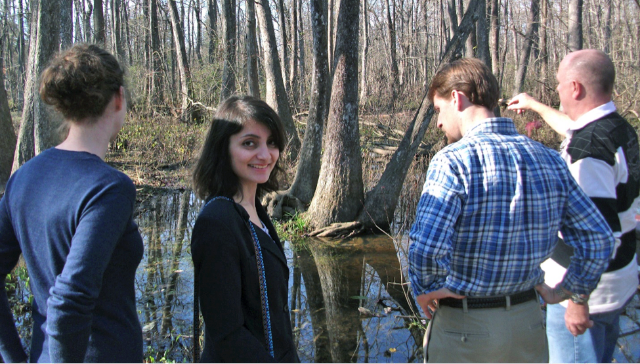A really quirky and interesting place to visit in Vientiane, or rather, an hour out of Vientiane is Buddha Park. The park was built in 1958 by Luang Pu Bunleua Sulilat, a monk who studied both Buddhism and Hinduism. This explains why his park is full not only of Buddha images but also of Hindu gods as well as demons and animals from both beliefs. Interestingly, this guy later moved to Thailand where he created a similar park named Sala Keoku in Nong Khai, on the other side of the Mekong river. I've made it a point to check that out too.
First, to get here, take a tuk tuk or walk to the main bus station at the city center. From there, head on to the bus that goes to Buddha Park - It should cost about 6,000 kips, which is around 75 cents!! The bus takes around an hour to get to the park and then, the entrance is around 5,000 kips.
As soon as you enter the park, you will see the giant pumpkin structure standing about three stories high to your right. The entrance of this structure is crafted to look like a demon’s mouth (about three metres high) with a very narrow stone ladder inside leading to a bird's eye view of the entire park.
Within the park itself are some outstanding sculptures which make your hair stand on end. One really gorgeous one was that of Indra, the king of Hindu gods riding the three-headed elephant (aka Erawan and Airavata).
Another one was of an artistic deity with 12 faces and many hands, each holding interesting objects. They are all equally impressive not only because of their enormous size but because they are full of interesting details and interesting motifs.
Finally, there is a Buddha on what looks like a snake but is really a naga or Mucalinda, a deity or class of entity or being taking the form of a very great snake, specifically the king cobra.This depiction is very common and the subject of Buddha meditating under the protection of Mucalinda is very common in Lao Buddhist art.
First, to get here, take a tuk tuk or walk to the main bus station at the city center. From there, head on to the bus that goes to Buddha Park - It should cost about 6,000 kips, which is around 75 cents!! The bus takes around an hour to get to the park and then, the entrance is around 5,000 kips.
As soon as you enter the park, you will see the giant pumpkin structure standing about three stories high to your right. The entrance of this structure is crafted to look like a demon’s mouth (about three metres high) with a very narrow stone ladder inside leading to a bird's eye view of the entire park.
Although there are no signs to explain the structures, what I understood from reading about this place later, was that the three floors in the pumpkin structure represent Hell, Earth and Heaven.
Getting to the top isn't really easy given how narrow the steps are. However, inside, you will be sheltered from the heat, and also experience some cool mythology first hand. I'm not really sure what these images meant, but there is some real creepy stuff going on. It has a medusa feel, with snakes around Buddha, and I am not sure exactly what story this comes from.
Within the park itself are some outstanding sculptures which make your hair stand on end. One really gorgeous one was that of Indra, the king of Hindu gods riding the three-headed elephant (aka Erawan and Airavata).
Another one was of an artistic deity with 12 faces and many hands, each holding interesting objects. They are all equally impressive not only because of their enormous size but because they are full of interesting details and interesting motifs.
Finally, there is a Buddha on what looks like a snake but is really a naga or Mucalinda, a deity or class of entity or being taking the form of a very great snake, specifically the king cobra.This depiction is very common and the subject of Buddha meditating under the protection of Mucalinda is very common in Lao Buddhist art.
The masterpiece was the resting Buddha which is something like 400 meters long, and certainly a sight to behold.
Finally, there is also a normal Buddha in the typical lotus pose, or so I believe...





















